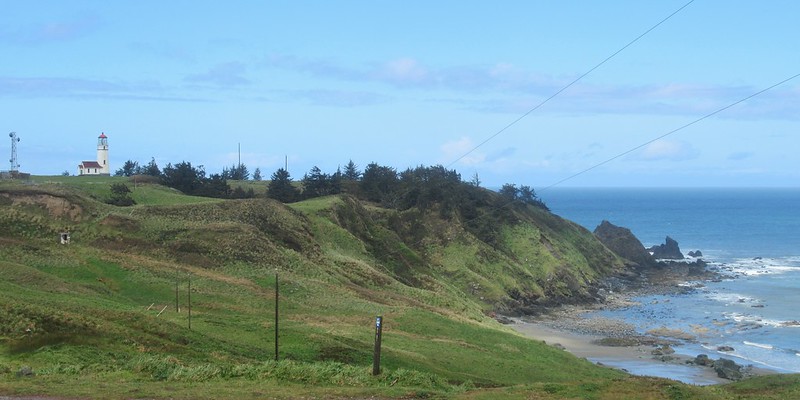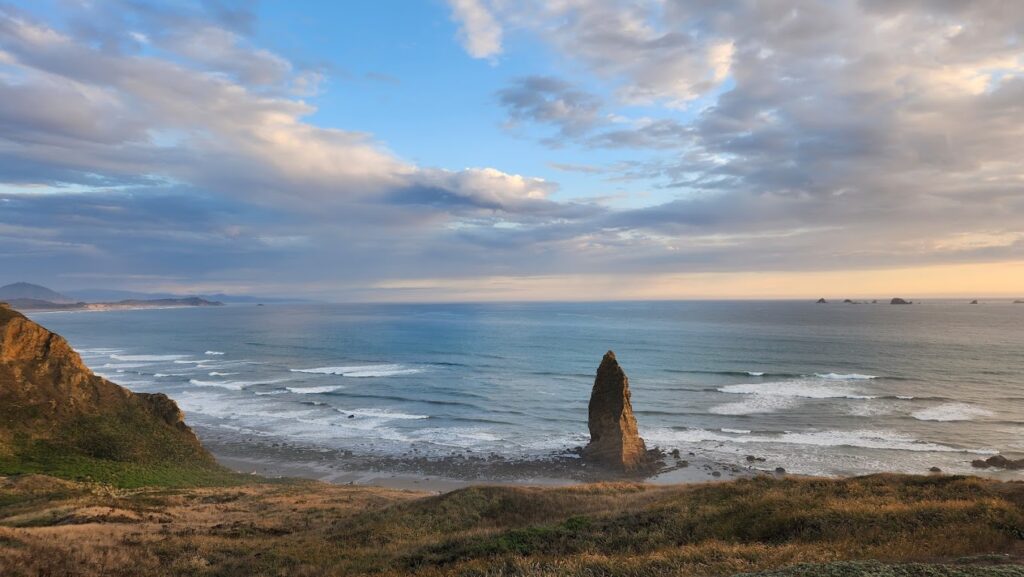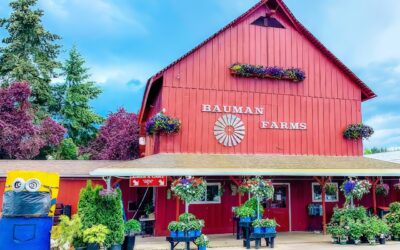I’ve always had a special affinity for the southern Oregon coast. To me, it seems wilder and more beautiful than almost any other place in the state, and Cape Blanco is the perfect representation of this. Cape Blanco sits 245 feet above the sea and is located just north of Port Orford, a town about four miles away. It’s believed to have been named Cape Blanco by the Spanish explorer Martín de Aguilar in 1603 because the headland appeared white and blanco means “white” in Spanish.

Oregonians who love the coast, the outdoors, or are lighthouse aficionados will delight in a weekend trip to the Cape Blanco State Park. Here you’ll be able to explore over eight miles of hiking trails, go horseback riding, beachcombing along the stunning coastline, fish on the Sixes River, stroll through an old pioneer cemetery, or set up their tents and camp out for a day or two.

The beautifully-maintained campground includes a horse camp, four cabins, a group site that can accommodate up to 50 people, and a hiker/biker area for thru-hikers on the Oregon Coast Trail that has flush toilets and hot showers (a complete luxury after you’ve been on the trail for days!).

But perhaps the crowning glory of the park is the Cape Blanco Lighthouse that was built in 1870 and features a 59 foot tall tower and an original Fresnel lens that allows its light to be seen up to 22 miles out at sea. The lighthouse is one of the most striking on the Oregon coast and holds many claims to fame.

For starters, it’s the oldest continually-running lighthouse in Oregon, and it’s both the southernmost lighthouse in the state and it sits on the westernmost point of Oregon. With the exception of the Cape Alava in the Olympic Peninsula in Washington, the Cape Blanco headland actually extends farther west than any other point in the contiguous United States! Another fun fact is that the lighthouse was also home to Oregon’s first woman keeper, Mabel E. Bretherton, way back in 1903.
Do you love Oregon?
Sign up for monthly emails full of local travel inspiration and fun trip ideas. In each newsletter we'll share upcoming events, new things to do, hot dining spots and great travel ideas.

You can visit the lighthouse any time of the year, but the gift shop and interpretive center is only open from April to October from 10:00 am to 3:30 pm every day except Tuesday. There are sometimes tours offered, but it depends on staffing. You can’t drive directly up to the lighthouse, but you can park at the gate and walk about a quarter of a mile up. All visitors should exercise caution when visiting the cape and the lighthouse since it can get rather windy up there, and if you’re exploring the beach always be aware of the tides.

While you’re there, you should also check out the adjacent Hughes House (a Victorian farmhouse) that was built in 1898 for the Irish pioneer Patrick Hughes who originally came to the area in search of gold. You can take a free tour of this house and learn about early 20th century farm life May through October.














